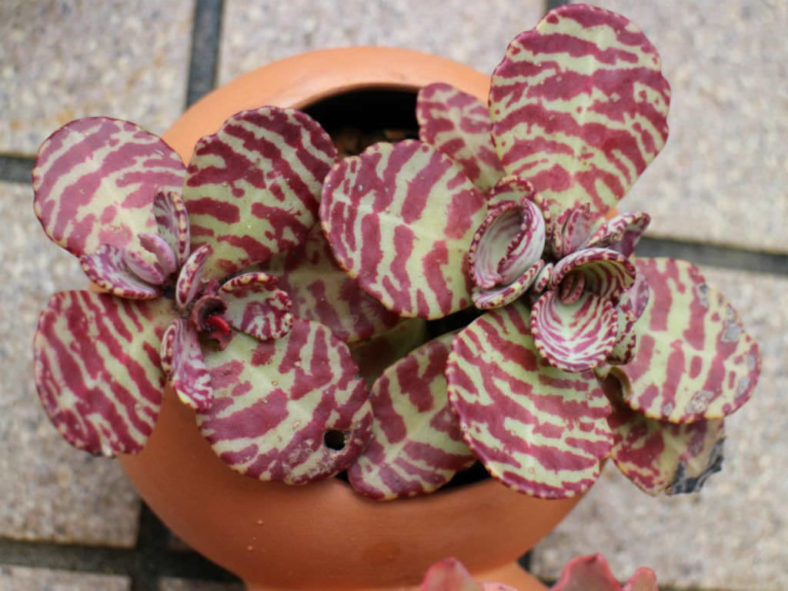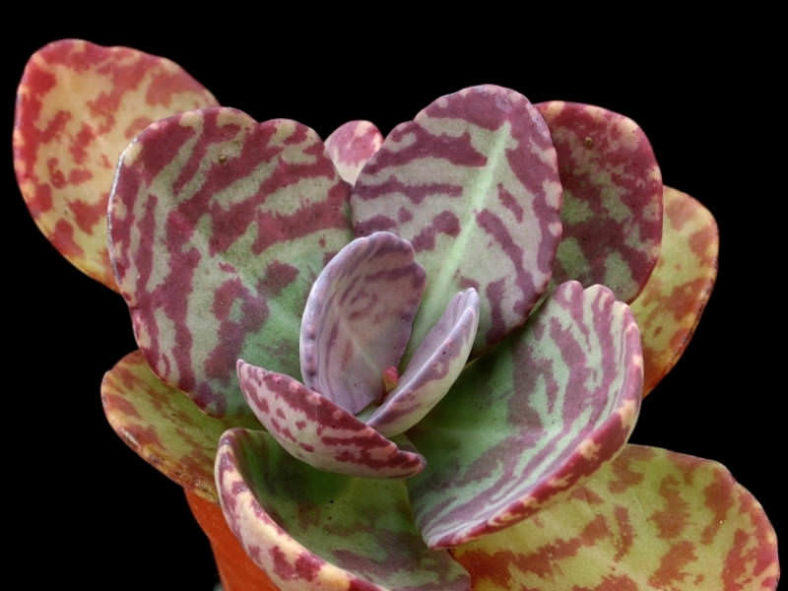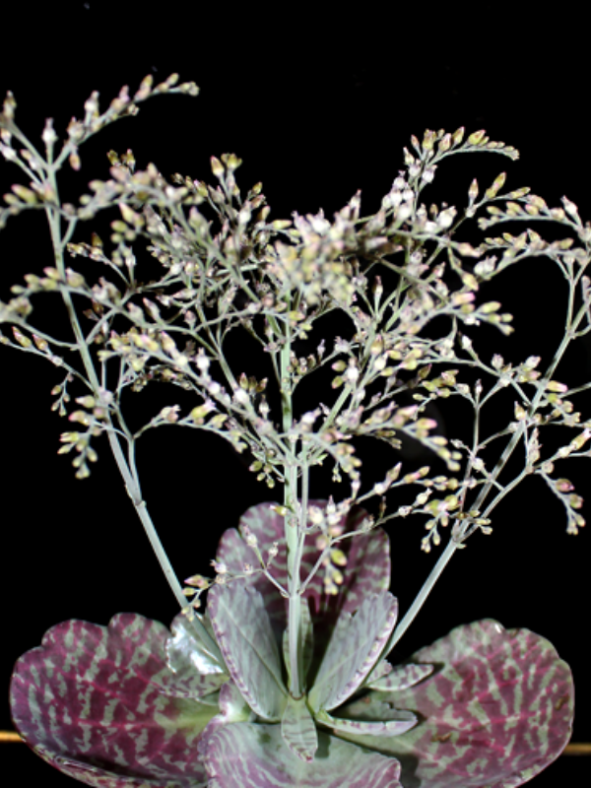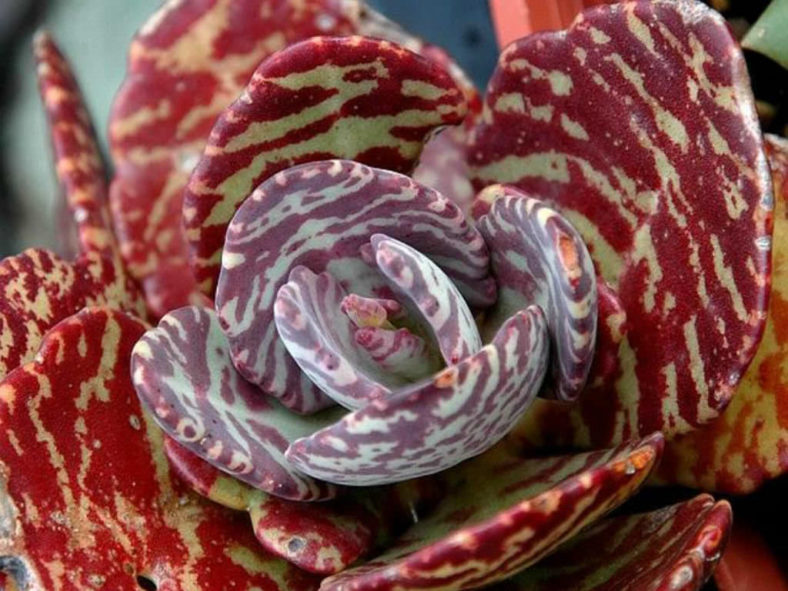Scientific Name
Kalanchoe humilis Britten
Synonym(s)
Kalanchoe prasina
Scientific Classification
Family: Crassulaceae
Subfamily: Sedoideae
Tribe: Kalanchoeae
Genus: Kalanchoe
Etymology
The specific epithet "humilis" (pronounced "HEW-mil-is") means "low, lowly, small, slight; shallow" and refers to the low-growing habit of this species.
Origin
Kalanchoe humilis is native to Tanzania, Malawi, and Mozambique.
Description
Kalanchoe humilis is an attractive, low-growing succulent with pale green leaves, usually strongly marked with purple or maroon. It is much-branched from a somewhat rhizomatous base and typically reaches a height of 3.4 inches (8.5 cm). The branches are simple or have few branches, woody at the base, purple or slightly glaucous. The leaves are egg-shaped, measuring up to 5.2 inches (13 cm) in length and 2.4 inches (6 cm) in width. They have a slight glaucous bloom on both sides and margins with rounded teeth.
The flowers are small, purple to green, and appear in erect, branched inflorescences that can grow up to 12 inches (40 cm) tall in mid-summer.

How to Grow and Care for Kalanchoe humilis
Hardiness: USDA hardiness zone 8a to 10b: from 10°F (-12.2°C) to 40°F (4.4°C).
Kalanchoe care is minimal, but be cautious about light levels. Intense sunlight can burn the tips of the leaves. When growing Kalanchoes, place pots in partial sun to light shade areas.
The flowering varieties are highly rewarding for their colorful and long-lasting flowers. They prefer bright, sunny locations, especially in the growing season. Water moderately from fall to winter when the growth is most active. Reduce watering during the hottest summer months, when plants are mostly dormant, and during winter, when growth slows down significantly. Let the soil surface dry out between waterings. Watch the fleshy leaves for signs of water distress. An ordinary potting soil mix is fine. Feed bi-weekly during the growing season with a liquid fertilizer, or use slow-release pellets.
These small plants require repotting every few years. When repotting, take extra care when handling, as the leaves are somewhat brittle and can snap easily. Clay pots work exceptionally well for planting Kalanchoes. Ensure pots can drain well and saucers can empty easily.
Learn more at How to Grow and Care for Kalanchoe.
Links
- Back to genus Kalanchoe
- Succupedia: Browse succulents by Scientific Name, Common Name, Genus, Family, USDA Hardiness Zone, Origin, or cacti by Genus
Photo Gallery
Click on a photo to see a larger version.


